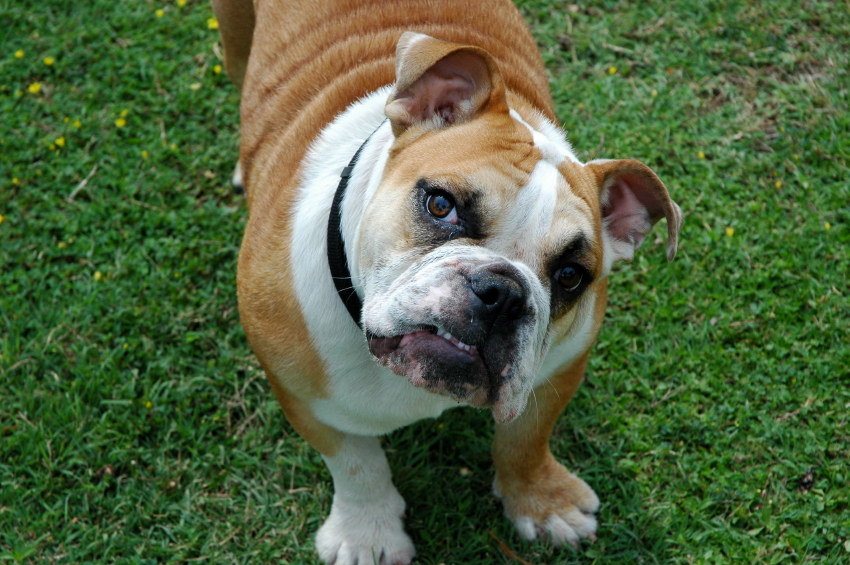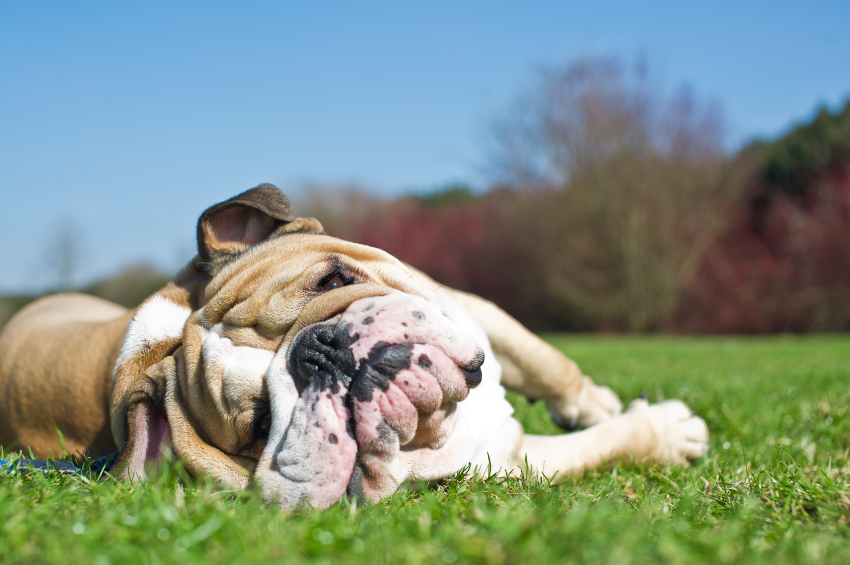Antifreeze products used in cars contain ethylene glycol, an organic compound that can easily poison and kill pets. As little as 8 tablespoons of antifreeze can kill a 48-pound Bulldog. Even small amounts of antifreeze are toxic to your dog’s organs, including kidneys, liver, and the brain. Preventing antifreeze poisoning in Bulldogs is crucial, especially during the winter months.

According to the ASPCA Animal Poison Control Center, most cases of antifreeze poisoning in Bulldogs occur because of improper storage and disposal of the products. Even a pet may come into contact with antifreeze solutions leaking out of a car’s engine and get poisoned.
Effects of Antifreeze Poisoning in Bulldogs
The minimum dose of antifreeze considered lethal for Bulldogs is about 5 ml per kilogram of their body weight. When your Bulldog consumes antifreeze, the ethylene glycol is metabolized into oxalic acid, which binds with the calcium in his blood – forming calcium oxalate crystals. Your dog will become severely sick when the crystals are deposited into his kidneys.
Symptoms of Antifreeze Poisoning in Bulldogs
Symptoms of antifreeze poisoning in Bulldogs often turn acute. The severity of symptoms also depends on the amount of antifreeze your Bulldog consumed and his weight.
Your Bulldog may show the following signs between 30 minutes and 12 hours of ingesting an antifreeze product.
- Tremors
- Nausea
- Depression
- Vomiting
- Twitching of muscles
- Lack of coordination (as if drunk)
- Stomach upset
- Increased drinking
- Increased urination
As the poisoning progresses, your Bulldog may show some of these signs in 36 to 72 hours after the ingestion.
- Decreased drinking but increased urination – resulting in dehydration
- Low body temperature
- Increased heart rate
- Labored breathing
- Sores in the mouth
- Drooling
- Lethargy
- Seizures
- Swollen kidneys
- Severe pain in kidney
Antrifreeze poisoning is fatal to dogs. If you suspect your Bulldog has ingested such substance, take him to a vet immediately.
Diagnosing Antifreeze Poisoning in Bulldogs
The veterinarian makes diagnosis based on your Bulldog’s history, symptoms present, and laboratory findings. If you witnessed your Bulldog lick a spill of antifreeze or its container/ cap, inform your vet immediately so that the pet can receive treatment as soon as possible.
Laboratory tests are also done to determine the presence of levels of ethylene glycol in the blood. Blood samples help check the levels of metabolites of ethylene glycol. These tests reveal results fast, but they are often not fast enough to save affected dog.
There are also other tests, including the ethylene glycol test kit, which can confirm the presence of ethylene glycol in your dog. Another test called ‘blood gas analysis’ assesses the antifreeze toxicity in your dog’s blood. Urinalysis may also be done to check if there is the presence of calcium oxalate crystals in the urine, a late sign of antifreeze poisoning in Bulldogs.
Treating Antifreeze Poisoning
The best and most effective way to stop antifreeze poisoning in Bulldogs is to prevent or limit the absorption of ethylene glycol from the GI tract – preventing the conversion of the compound to toxic elements. Making your Bulldog vomit helps limit the absorption of ethylene glycol. It is not advisable to make bracycephalic dogs, such as Bulldogs, to vomit but in emergency cases, some veterinarians choose the method to save your pet. Another method used in taking out antifreeze out of the GI tract is called gastric lavage or stomach pumping. The stomach is emptied to prevent the poison from spreading into the blood. These methods only work when done within an hour of the ingestion of antifreeze.
IV Fluids
Administration of IV fluids is another option to correct any fluid and electrolyte imbalance. This also increases the excretion of ethylene glycol and associated metabolites.
Antidotes
Antidotes, such as ethanol and fomepizole, are commonly used to counteract the effects of ethylene glycol in the body. Experts do not recommend the administration of both antidotes to a dog at a time. Fomepizole is the most commonly used antidote for antifreeze poisoning. But this must be given intravenously to the affected dog within the first 8 hours after the ingestion of antifreeze. This antidote holds back the transformation of ethylene glycol into oxalic acid. The administration of this antidote may result in side effects.
Like fomepizole, ethanol is given intravenously. But to be effective, it must be given within the first few hours after the ingestion of antifreeze. Dextrose is added to ethanol to prevent the affected dog from suffering from hypoglycemia. Other medications are also given to relieve stomach and intestinal issues brought by antifreeze poisoning.
Ethylene glycol and its metabolites usually are flushed out through the kidneys within 1 to 2 days. If your Bulldog survives that long, he is most likely on the road to recovery with minimal health issues. In cases where treatment is delayed, it takes weeks and even months for him to recuperate. Unlucky dogs who are diagnosed and treated very late often suffer from kidney failure, which eventually leads to death.
Preventing Antifreeze Poisoning in Bulldogs
Antifreeze poisoning is fatal in dogs but it can easily be prevented with these steps.
- Keep your cars’ antifreeze stored in places your Bulldog cannot reach
- Keep the antifreeze’s cap tightly closed
- Clean up antifreeze spills immediately
- Fix your car’s leaks immediately
- Don’t allow your Bulldog near your car unattended
- Opt for an antifreeze product with the less toxic propylene glycol in it instead of ethylene glycol

